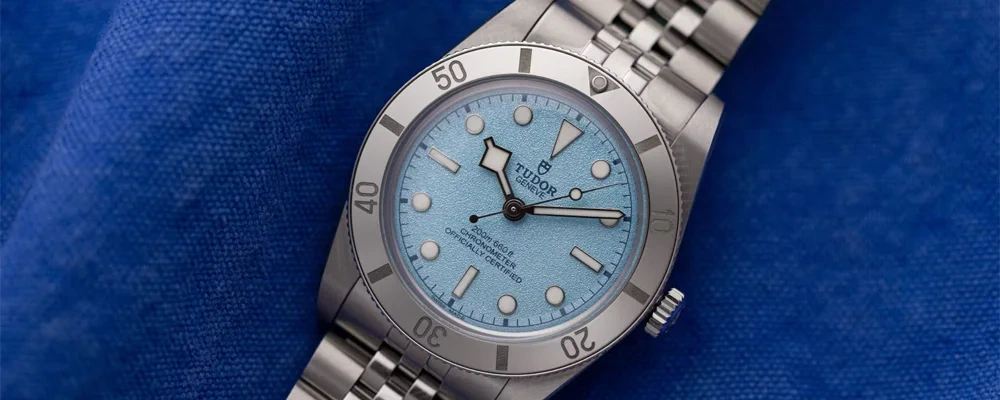Rolex’s Dominance in the Second-Hand Market is Slipping - Here’s Why
For years, Rolex has been the king of the second-hand watch market, but new data from Chrono24 suggests the crown is slipping (pun intended). The online marketplace reports that Rolex’s share of transaction volumes has dropped from a peak of 44% in 2022 to just 34% by the end of 2024. So, what happened?
Source: Yahoo
The Boom and the Bust
During the pandemic, demand for luxury watches skyrocketed. Travel restrictions and extra disposable income had people investing in high-end timepieces, and Rolex, as the flagship brand, benefited the most. Prices went up, fueled by speculators flipping watches at insane markups. By early 2022, Rolex accounted for nearly 44% of all sales on Chrono24.
But what goes up must come down. By mid-2022, the bubble burst, and second-hand Rolex prices plummeted. Many speculators were left with watches they couldn’t sell at a profit. The days of instant flips and easy gains were over, and the market began to normalize. Fast forward to 2024, and Rolex’s share has fallen to 34% as demand cools and supply grows.
Shorter Wait Times at Authorized Dealers
If you were trying to get a Rolex from an authorized dealer (AD) a few years ago, you probably found yourself on a long waitlist. In 2022, buyers were waiting around 180 days for a GMT-Master and 105 days for a Submariner. By the end of 2024, those wait times had dropped to 90 days and 60 days, respectively. This means more people are getting their Rolexes at retail, reducing the need to pay inflated prices on the second-hand market.
Source: Yahoo
Rolex’s Certified Pre-Owned Program Changed the Game
In 2023, Rolex launched its Certified Pre-Owned (CPO) program, giving buyers the option to purchase authenticated second-hand watches directly from authorized dealers. This move redirected a chunk of the resale market away from platforms like Chrono24. While you’ll pay a premium for a CPO Rolex, you’re also getting factory-backed authenticity and a full warranty, something that’s hard to come by on the second-hand market.
Who’s Gaining Market Share?
As Rolex loses some points, other brands are stepping up. Omega now holds 10% of the second-hand market, while Patek Philippe sits at 6.7%. Cartier has seen the biggest rise, doubling its share from 2.5% in 2020 to 5.2% in 2024. Unlike Rolex, these brands didn’t experience the same extreme price spikes in 2022, so their values have been more stable.
Source: Yahoo
Not All Rolex Models Are Affected Equally
Some Rolex collections have held their value better than others. The Datejust and Day-Date, for example, only saw slight price declines of around 1.5% in 2024. But the sportier models that shot up the most in 2022 - like the Daytona and GMT-Master - saw bigger drops, around 1.7%. The biggest losers are the Yacht-Master (-2.3%), Sky-Dweller (-2.5%), and Explorer (-3.0%).
Interestingly, demand for traditional Rolex designs appears to be growing. The Datejust now makes up 28.8% of all Rolex purchases on Chrono24. Among buyers under 30, that number jumps to 37%, suggesting a shift in taste from hype watches to more classic styles.
Rolex Buyers Are Getting Younger
The stereotype of the Rolex-wearing grandpa chilling with a drink at the golf club might be a thing of the past. Younger collectors are now hungry for some watches, with Rolex holding a massive 41.1% market share among buyers under 30. That number gradually declines with age - 36% for those in their 30s, 29.7% for 40-somethings, and around 28.5% for those over 50.
However, older buyers tend to go for the higher-end models. The Rolex Daytona, for example, makes up 17.1% of Rolex purchases among those over 60 - more than double the 8.2% share among younger buyers.
The Future of Rolex in the Second-Hand Market
Rolex isn’t going anywhere. It still makes up over a third of Chrono24’s transactions, which is more than three times its closest competitor. But the days of unchecked price jumps and speculative flipping appear to be over. With shorter AD waitlists, a growing CPO program, and shifting buyer preferences, the second-hand Rolex market is entering a new era - one that favors collectors over quick-profit seekers.
For those looking to buy, this could be great news. Prices are stabilizing, availability is improving, and the hype-driven chaos of the past few years is starting to settle. If you’re after a Submariner, a Daytona, or a classic Datejust, the market is finally tilting back in favor of real enthusiasts rather than speculators. And that’s a win for watch lovers everywhere.
Related Articles
Richard Mille re-releases their signature model in titanium - is it a good choice?

